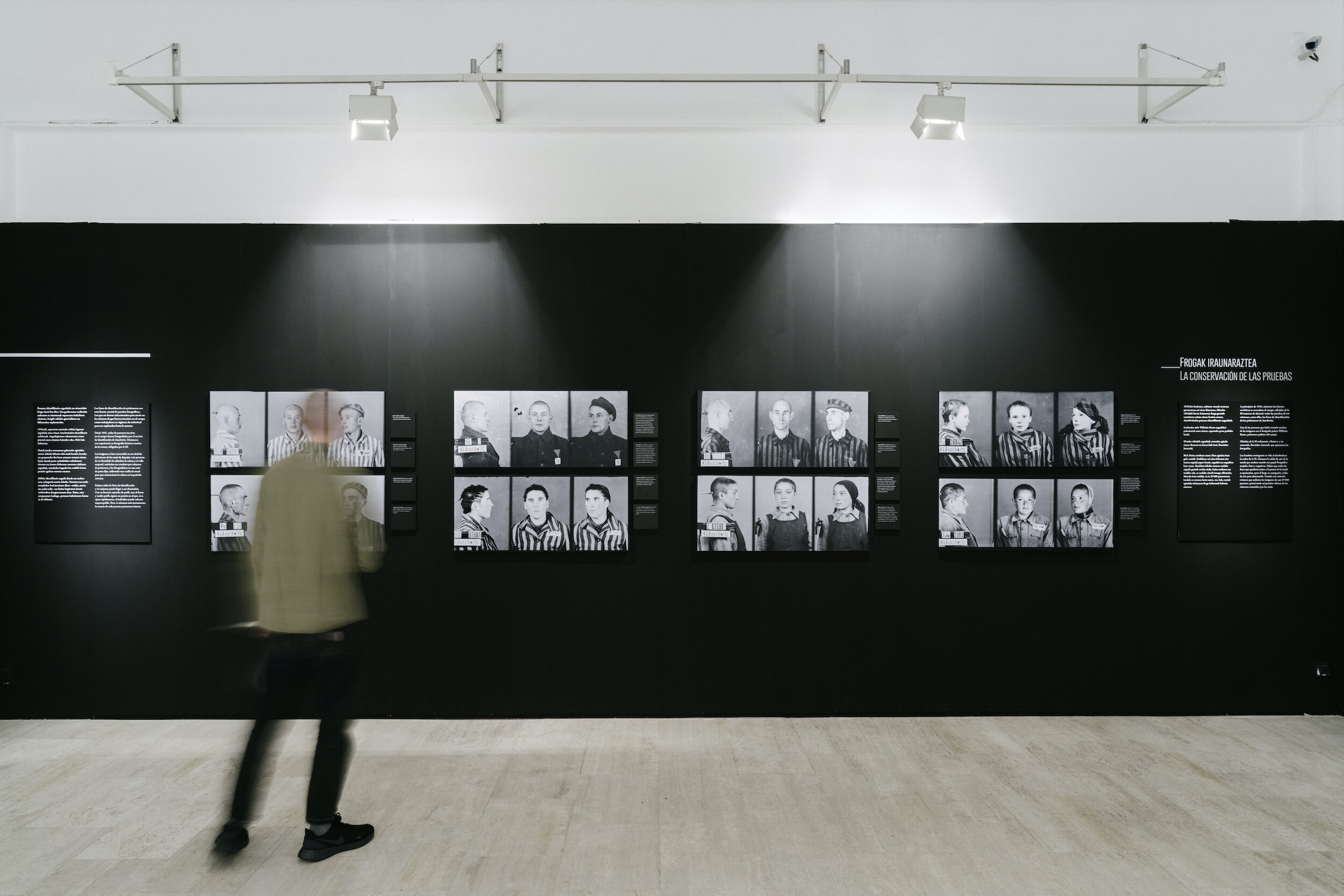
Seeing Auschwitz
Auschwitz was the biggest killing centre in human history.
Yet our collective image of this universal symbol of the Holocaust rests on just a handful of surviving photographs, most of which were taken by the perpetrators.
Seeing Auschwitz invites us to interrogate the visual record and look beyond the perpetrator’s gaze.
Paul is the Chief Curator of Seeing Auschwitz, which was developed for the UN and UNESCO by Musealia, in collaboration with the Auschwitz-Birkenau State Museum.
The exhibition opened simultaneously at the UN Headquarters in New York and UNESCO’s Headquarters in Paris, in January 2020.
It is now travelling to museums, educational and cultural institutions around the world.
Looking beyond the perpetrator’s gaze
While the images created at Auschwitz are unequivocal evidence of the crimes committed there, they present a great challenge to the viewer at the same time.
“Although they appear to be faithful portraits of an instant, these photographs are not neutral sources,” explains Paul Salmons, Lead Curator. “Without a doubt, we are looking at a piece of reality, but from the Nazi perspective.
“So it is necessary to stop, analyse, and really see what each image truly reveals – not only about the place and the moment, but also about the image makers, the people portrayed, and even about ourselves as spectators.”
Listen to the audio guide
Paul has collaborated with writer and voiceover artist Leah Kharibian to create a new audio guide for Seeing Auschwitz.
In this extract we listen to a guided interrogation of one of the key photographs from the visual record. It shows a vast crowd, recently disembarked from a steam train, which is visible in the background.
But whose eyes are we seeing this scene through? And how does that influence what we see?
The audio and video here explores a particularly detailed photograph of a crowd, recently disembarked from a train.
Testimony used with kind permission of USC Shoah Foundation.
“We are very grateful for Paul’s outstanding work and energy; his academic rigour; his profound pedagogical understanding; and the original insights he brought to bear in support of UNESCO's work in Holocaust education and the prevention of genocide.”
— Karel Fracapane, UNESCO
A new, expanded experience
Since its launch in New York in 2020, the exhibition has been expanded to include:
Drawings from an inmate of Auschwitz, which were found after the war, hidden in a bottle in a barrack near the gas chambers. These drawings contrast strongly with the photos of arrival and selection taken by the SS.
Video testimony of former Sonderkommando prisoners, forced to work in the crematoria that housed the gas chambers.
Drawings made immediately after the war by former Sonderkommando David Olere, showing the details of the mass murder process not included in the SS photographs.
New sections on the death marches and on liberation, adding new perspectives on the experiences of Auschwitz inmates.
Short films highlighting genocides and crimes against humanity since 1945, asking whether - if such atrocities continue to scar our world - we can really say that we have seen Auschwitz at all.
A new audio guide which helps visitors with a more forensic and critical reading of the images in the exhibition.
All Seeing Auschwitz exhibition pictures courtesy of © Musealia.
On visiting the exhibition in Paris, Audrey Azoulay, Director General of UNESCO, said:











